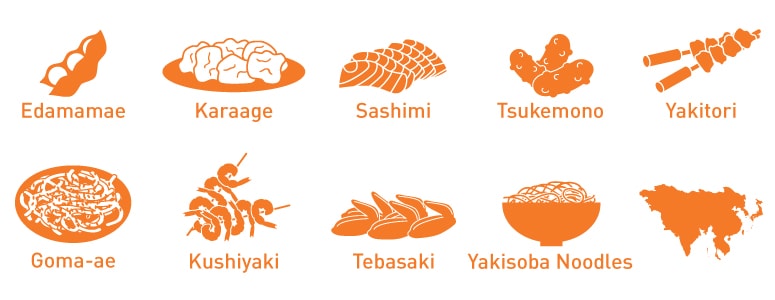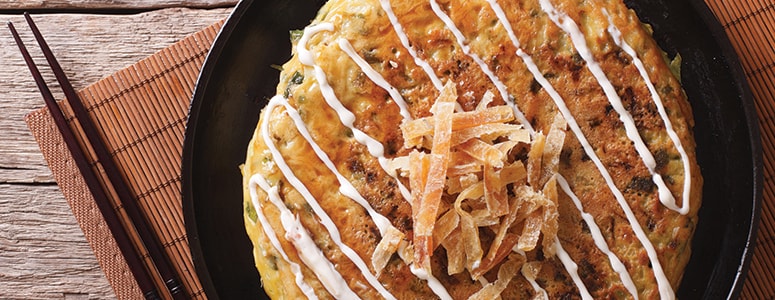Executive Chef Miguel Trinidad of Jeepney Filipino Gastropub and Maharlika Filipino Moderno says, “ I think the American palette is bored, and they want some excitement. That’s why you see all types of ethnic food popping onto the scene right now. Filipino being one, there’s a Malaysian craze in Seattle and you’re going to see Latin food take off in the next couple of years—re-emerging . People really just want to try something new and be excited by what they eat.”
What’s Trending
Filipino
Chef Miguel Trinidad explains, “When it comes to Filipino food there's so much influence from different cultures. They have Malaysian influence, Chinese influence, and Mexican influence from when the Spanish came. You’ll see a lot of Mexican influence in the food down in Mindanao which is the southern region. The Muslim area uses less pork and more chicken and vegetables.”
Consider purple yam custard with caramelized jackfruit and puffed rice as well as adobo, lumpia and pancit. The sour, slightly sweet flavors of adobo go well into any afternoon daypart, and can be entrees or apps. Be ready for more flavors coming out of the Philippines, Chef Miguel states that there are regions in the Philippines like Bicol where that still hasn't reached the states.
Izakaya

This is essentially a type of informal Japanese gastropub. Imagine an Irish pub that serves tapas-sized dishes all wrapped up in a Japanese theme. That’s essentially what Izakaya is. Typical dishes include:
- Edamame
- Goma-ae – various vegetables served with a sesame dressing
- Karaage – bite-sized fried chicken
- Kushiyaki – grilled meat or vegetable skewers
- Sashimi – slices of raw fish
- Tebasaki – chicken wings
- Tsukemono – pickles
- Yakisoba noodles
- Yakitori – grilled chicken skewers
Gochujang
The backbone of Korean cooking, this fermented hot pepper paste is the fastest-growing Korean ingredient in the US according to Technomic.*
Indonesian
Inspired by the countries surrounding it as well as Dutch colonial foods, Indonesian is a delicious fusion. Our chefs love roasted carrot and papaya salad with carrot greens pesto, with creamy coconut and sambal dressing topped with roasted peanuts.
Marketplace Examples
Mina Test Kitchen in San Francisco serves Tokyo hash browns with soy caramel, spicy Kewpie mayo, scallions and toasted nori.
Top Knot in Dallas is known for a pork katsu slider that comes with cabbage, apple and miso mustard.
Jeepney Filipino Gastropub in New York hosts a Kamayan Night that serves a variety of Filipino foods on banana leaves for a barehanded, family-style feast.
How to Incorporate Asian Flavors Into Your Menu

Chef Miguel Trinidad offers his encouragement to those wanting to start with Filipino dishes, “My advice to anybody who wants to experiment with Filipino food is grab a recipe try it and then make it your own. The thing about Filipino is food is that the food is made with the ingredients that are around you. Use what’s around you and make it Filipino. ”
Okonomiyaki is a savory cabbage pancake that’s often flecked with bacon, spring onion, pork belly or seafood, then topped with a fruit-sweetened soy glaze and Kewpie mayonnaise. The base is versatile enough to add your own ingredients, and the flavor profile offers many traditional western flavors.
Consider an out-there ingredient with a normal American dish for a unique fusion. For example, Kimichi deviled eggs.
*Technomic Word Cuisines report 11/2016



